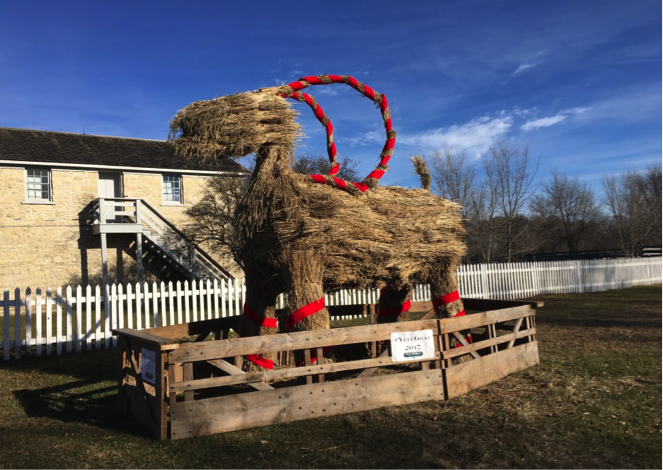On lille julaften (December 23), Norwegian families typically decorate the juletre (Christmas tree), adorning the branches with handmade woven baskets, lights, Norwegian flags and figures made from straw. One of the traditional straw ornaments is the julebukk, or Yule Goat.
Many of Norway’s Christmas symbols stem from pre-Christian times, and the Yule Goat is no exception. It was believed that the last sheaf of harvested corn contained the power of that year’s harvest. This cut of grain was saved and made into a festive goat for Yuletide and was thought to keep evil spirits at bay.
The role of the Yule Goat changed over many centuries and became incorporated into the Christmas holidays. At one point in time, the julebukk distributed gifts after checking whether people had been on their best behavior. In the 1800s, revelers would go julebukking, roaming from door-to-door costumed as goats, playing pranks and demanding treats from their neighbors. This practice continues today albeit with a wider variety of costume choices.
Old World Wisconsin, a living history museum outside of Milwaukee, incorporates traditions from various ethnic groups into their An Old World Christmas event. This year, in a nod to Norwegian, Swedish and Finnish traditions, their farm staff built a 12-foot julebukk (pictured), similar to the outsized Yule Goats that adorn town squares in Sweden. Using a wooden frame covered in straw and large sections of red ribbon, they created what they think is the largest YuleGoat in the U.S. The julebukking tradition also continues in Seattle, with an annual event at the Ballard Elks Club.
With its many interpretations, the julebukk has proven to be a lasting symbol, with a hoof in the ancient and one in the modern. It now has its own hashtag, #julebukk , oft-referenced in a hot Norwegian Twitter debate around which is better: trick or treating American-style, or julebukking.

